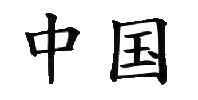China Beat Archive

China Beat Blog: Archive 2008-2012
Date of this Version
6-1-2008
Document Type
Article
Citation
June 1, 2008 in The China Beat http://www.thechinabeat.org/
Abstract
“I think there’s a lack of books that serious, educated non-specialists can pick up…I’ve read a lot of great books recently by academics but few that I could recommend, say, to my father.” These lines come from an interview with the Wall Street Journal’s Ian Johnson that “China Beat” ran at the end of January, back when our site was still young (now that we’ve been going for more than a third-of-a-year, we hardly count as youthful anymore, so quickly does the blogosphere change). He was responding to a question Nicole Barnes had put to him about what he’d like to see more of from academics in Chinese studies, and he went on to specify that the problem lay primarily in how much jargon popped up in scholarly publications—though I suspect that he also might have been thinking about stodgy writing but was too polite to add that. Well, Ian, I hope you’re reading this, as I have some good news, which may be especially welcome with Father’s Day coming up soon: Harvard University Press has released the U.S. edition of Geremie Barmé’s The Forbidden City, and it’s just what the doctor ordered. It’s a wonderfully readable, smart look at “The Great Within” (as the Forbidden City’s sometimes called), which is jargon free and definitely non-specialist friendly.
It’s also anything but stodgy. There are tales of court intrigue. And even a racy extract from a unpublished early-twentieth-century work by the renowned and then later reviled “displaced Cornish aristocrat Edmund Trelawny Backhouse,” a famous Sinologist and forger, who claimed to have had erotic encounters with Empress Dowager Ci Xi, one of the most infamous residents of the Forbidden City, though, as Barmé notes, her reputation is not quite as bad these days among scholars as it once was.
Included in
Asian History Commons, Asian Studies Commons, Chinese Studies Commons, International Relations Commons


Comments
Copyright June 1, 2008. Used by permission.